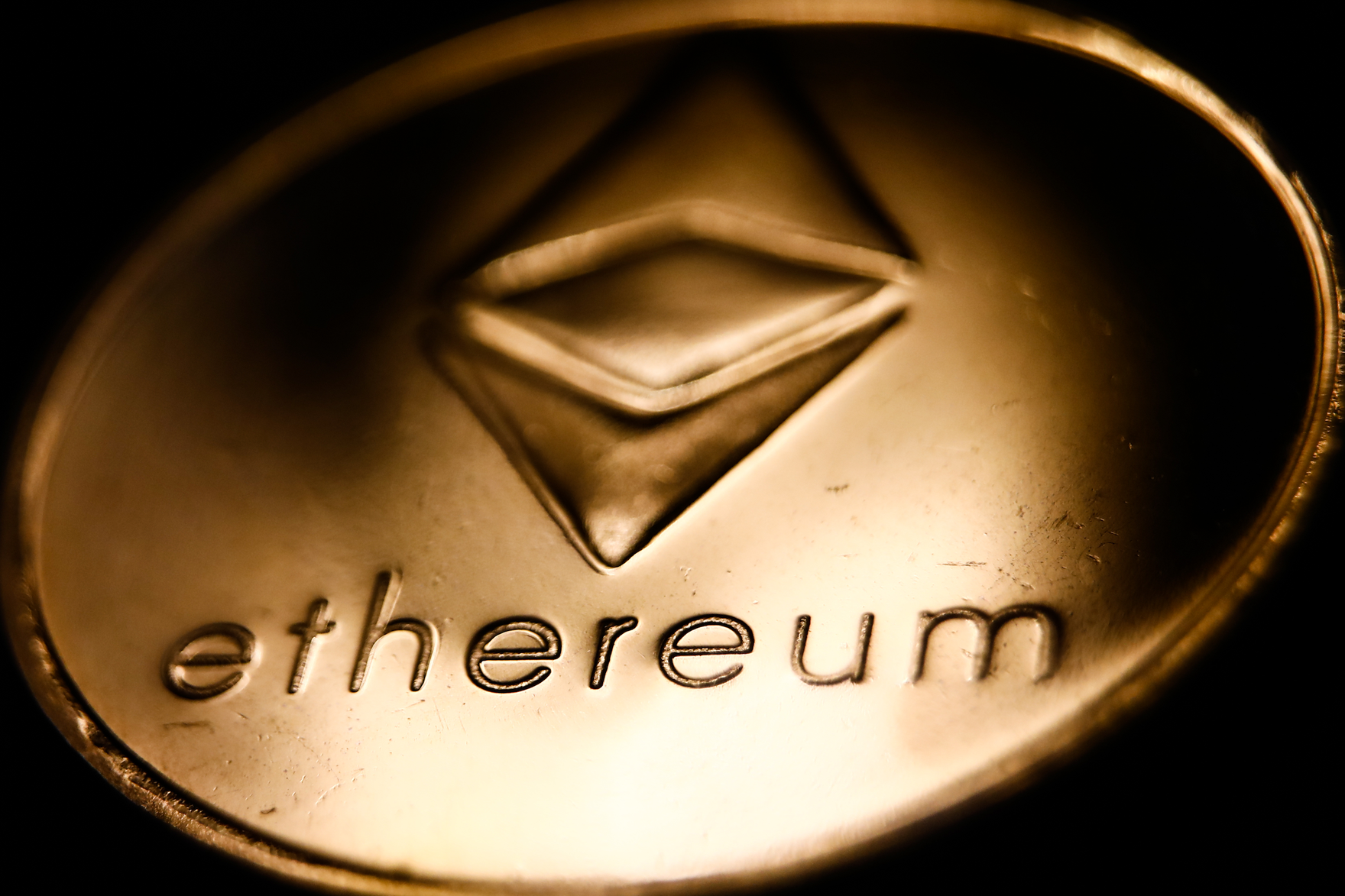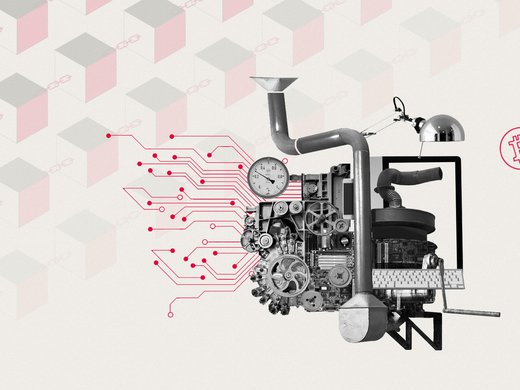Imagine a “virtual” energy drink, a power-boosting beverage that exists only as a series of zeroes and ones in computer code and is stored not in your fridge but across the indifferent servers of a centralized tech platform or, perhaps, the decentralized exchange of a popular blockchain protocol. The drink offers no obvious utility or promises of pleasure. It has no promotional value, no aesthetic or brand identity. It cannot be exchanged for a physical energy drink. How such an artifact could have any economic value or meaning within human civilization is unclear.
The purpose of this article is to demonstrate how a virtual energy drink already has significant economic value. Converging technologies in cryptography, decentralized finance and computer processing power have led to the introduction of a new historical asset class: the virtual asset. The origins of this new asset class can be discerned in the “cypherpunk” movement of the 1990s. Then, an informal group of privacy activists, cryptographers and pro-crypto coders communicated across electronic mailing lists, on everything from technical specifications to philosophies of government. Described in 1993 as a “seemingly innocuous bunch,” this fringe group was to have an outsized impact on the development of cyberspace. The apogee of their work would arguably arrive in 2009, with bitcoin.
Building the Blockchain: 1995–2009
The idea that a virtual energy drink might be possible and hold economic meaning arguably begins with the invention in January 2009 of bitcoin and the peer-to-peer infrastructure upon which the digital currency would be based: the “blockchain.” More than a decade before this, according to “Hobbes’ Blockchain Timeline,” self-described cypherpunks such as Markus Jakobsson (author of “Ripping Coins for a Fair Exchange” in 1995) and Adam Black (who introduced “Hashcash” in 1997) were exploring digital currencies. In 1996, Nick Szabo published an essay entitled “Smart Contracts: Building Blocks for Digital Markets,” and a year later used the term bit-gold in another essay, “Secure Property Titles with Owner Authority.” Szabo’s work, in particular, focused on digital currencies as a potential “micro-government” or “constitutional form of micro-democracy,” demonstrating a focus that was as much on social contract theory as on financial and monetary architecture (as I wrote for the Policy Blog).
The early cypherpunks discussed digital markets and currencies as social contracts, and not simply as disintermediating and decentralized financial tools. The 2008 credit crisis sharpened minds around a clear financial use-case. As Satoshi Nakamoto described it in “the paper that first introduced Bitcoin,” “a purely peer-to-peer version of electronic cash [that] would allow online payments to be sent directly from one party to another without going through a financial institution” was achieved with the minting of the first bitcoin genesis block in January 2009.
A proof-of-work consensus mechanism would use computer processing power across a distributed network to verify each transaction on a publicly visible digital ledger. It became possible to own a little piece of code, ascribe a nominal value to that code, and call it a coin. According to Wikipedia’s history of bitcoin, a user called “SmokeTooMuch” attempted to auction 10,000 bitcoins for $50 in March 2010, but could not find a buyer. At the time of writing, a single bitcoin is exchanged for US$64,825 by hedge funds, banks and institutional investors across developed and emerging economies.
In order for digital money to function as a unit of economic exchange, individual users in cyberspace had to demonstrate ownership of a coin, and transfer this ownership or possession at will. This transfer of coins was made possible, verifiable and “trustless” by the innovation of the blockchain: a cryptographic hash of transaction data publicly time-stamped on a block that cannot be retroactively altered. Once it was possible to own and exchange digital coins across a decentralized network, it was inevitable that other forms of property exchange would follow.
In effect, the invention of cryptocurrencies and blockchain-based transactions has created the architecture for other forms of digital ownership and economic exchange. This means that when a user purchases a virtual energy drink across a blockchain-based protocol, the user owns that item; this ownership is verifiable, proven and cannot be revoked, except in cases such as cyber theft or hacking. The asset is secured not by a central institution or a government, or by the use of force: it is backed by cryptography, instead of bank guards; computer processing power, instead of gold; and block-based consensus, instead of a human signature.
Users can sell their virtual energy drinks in a fashion similar to how they might exchange a coin. But who would buy them? Where does the value reside?
Price, Value and the Medieval Plow
Equally, the price of the virtual energy drink is publicly visible, on the blockchain itself or across a range of platform-based user interfaces; a user could transact for the virtual commodity using a credit card, or by paying with a range of cryptocurrencies. On the blockchain, it is therefore possible to own a virtual energy drink. It is possible to transact and pay for a virtual energy drink. Yet there is a difference between ownership, price and value. Users can sell their virtual energy drinks in a fashion similar to how they might exchange a coin.But who would buy them? Where does the value reside?
As Mariana Mazzucato writes in The Value of Everything, economics cannot be studied independently from the prevailing social and political context. In 1959, in his book The Prospects of Industrial Civilisation, Bertrand Russell used the invention of the plow to signify how economic value can be highly context-dependent and transformative: “A plough is something which does not in itself satisfy any of our needs or desires, but diminishes the amount of labour required for satisfying our hunger.”
Writing on the dawn of a new “mechanistic” age, Russell defined industrialism as “the extension of … making tools, until the tools grow into modern machinery, which requires for its production and use the co-operation of large numbers of workers.” Sixty-two years later, in their paper “Natura Non Facit Saltus,” Antonio Andreoni, Ha-Joon Chang and Mateus Labrunie emphasize the role of technology fusion in evolving production processes and the forming of more efficient organizational solutions. According to Andreoni and his colleagues, fusion across technology clusters is “resulting in autonomous and intelligent machines and systems” that create “evolutionary transitions in virtually every sector.”
Without a field to sow or plant, and without a knowledge of how to grow crops, a plow ceases to become a tool or an economic instrument of value. It is only within a particular series of contexts — time (the feudal farmstead), location (land), knowledge (farming), technology (wood and steel) — that the plow can clearly be identified as an economically transformative technology.
While a virtual energy drink cannot compete for a similar place in economic history, it has a value that is equally context-dependent.
From the Crypto Wallet to Virtual Property
To enable the transfer of crypto coins, digital container wallets were built across various blockchains. To begin with, most wallets were coin-specific: designed to hold only bitcoin, or only Ethereum, or only one of a hundred other coin specifications. Users that transferred their coins to a conflicting wallet ecosystem will lose their money, because a wallet cannot “read” or “contain” a non-compatible coin. Today there are several agnostic wallet ecosystems, which can store hundreds of coins from different blockchain standards within a single wallet.
Exactly the same architectural challenge occurs for other forms of digital property: virtual art, buildings, music, avatars and any manner of ephemera can all be transferred and verified across the blockchain, even if it remains unclear how these assets will be exhibited, lived in or utilized. In this sense, virtual commodities are a technologically rare example of the cart becoming before the horse, the plow before the field to sow.
Just as wallets were built to retain the economic value of crypto coins, new containers are being established across cyberspace to derive utility from a dizzying number of new virtual assets. In the art world, non-fungible tokens, or NFTs, have been deployed by auction houses such as Sotheby’s and Christie’s to sell minted, limited-edition digital artworks on the blockchain. Christie’s recently surpassed US$100 million in NFT art sales. This digital art has no physical manifestation. It can be exhibited on a number of specially designed LED (light-emitting diode) screens. Provenance is established by the blockchain, linking the art directly back to the on-chain creator and auctioneer. Launched in 2015 on Ethereum, NFT architecture is non-fungible, meaning that the assets have no specified value, allowing assets to be traded across digital markets for whatever a customer is prepared to pay. In this sense, NFTs represent the beginnings of digital markets proper, as assets can be traded, sold and licensed.
The emergence of NFT art supports Andreoni, Chang and Labrunie’s thesis that it is through the fusion of advanced technologies that new value can be discovered and derived. A complex and seminal illustration of this fusion is emerging across cyberspace and blockchain infrastructure, in the form of mass multiplayer online worlds.
In a blockchain-based world such as Decentraland, or a dozen others already in development, a virtual energy drink may not only be owned and traded: it may also confer distinct advantages.
Online Worlds: A Field to Sow
Centralized, platform-based worlds such as Fortnite sell in-game avatars, experience and “power-ups” to 350 million users. Companies such as Meta (formerly Facebook) plan to migrate a user base of 2.85 billion active monthly users into a “metaverse” digital market, likely deploying a proprietary cryptocurrency such as Libra at some stage for in-universe transactions. Interactive, real-time virtual environments are intended to function as a new arena for human interaction and trade. Much as a simple crypto wallet did for programmatic currency, they will create a far wider context and container for the globalized digital markets of the future. A virtual economy.
According to writer and venture capitalist Matthew Ball, approximately US$54 billion was spent in 2020 “on virtual goods, skins and lives” (achievements earned in video games), compared to US$42 billion at the movie box office and US$30 billion on recorded music in 2019. The surging growth of the collaborative game platform Roblox, particularly among high-school-aged children, is notable for its speed, the requirement to purchase in-game currency, and social trends, such as the virtual birthday parties that became popular during the COVID-19 pandemic. According to The New York Times, in the first quarter of 2021, players spent US$652 million on Roblox’s in-game virtual currency, Robux, to purchase in-game experiences and items for characters. Between 2019 and 2020, Roblox’s revenue increased by 82 percent. Companies such as Second Life and Fortnite have reported similar compound growth rates.
A tiny percentage of these online transactions were non-platform-specific — that is, owned by users rather than licensed by a proprietary platform. If a popular gaming world like Fortnite closed down tomorrow, the energy drink a user purchased for $10 would be lost. Ownership was never really conferred; the drink cannot be classed as an objective digital asset.
The advent of blockchain and crypto wallet transactions into online worlds such as Decentraland, Uptown and Roblox has changed this dynamic: now the virtual energy drink is an asset registered on the blockchain. Increasingly, it has a value and can be traded outside of the specific gaming world it was purchased within.
It is in the emergence of these online worlds that we see the beginnings of a field to sow. We also see the fusion of advanced technologies: software based on the Unity cross-platform game engine for 3D rendering; augmented reality (AR) and virtual reality (VR) headsets for immersive viewing; distributed computing for processing power; a global push for increased network latency standards; and rapidly evolving blockchain-based monetary, digital-ownership and consensus systems. It is at this point that a virtual energy drink can confound a prima facie economic argument to obtain value and meaning.
In a blockchain-based world such as Decentraland, or a dozen others already in development, a virtual energy drink may not only be owned and traded: it may also confer distinct advantages. The one most cited is performance. Deriving from video-game lore of old, the energy drink acts as a power-up, allowing an avatar to race faster, become stronger, teleport quicker or survive longer than the competition. Given that these digital markets transact in coins with a corresponding real-world or fiat-based cash value, the peer advantage of a virtual energy drink in the context of something like e-gaming, for example, might have significant commercial implications. The virtual energy drink does convey sustenance and advantage, inside the virtual realm. Two other phenomena distinguish the virtual energy drink from its physical equivalent. The first is the production process. The second is time.
The virtual energy drink was likely designed and rendered as three-dimensional using a software package such as Unity or Unreal Engine, by a single creator or a large corporate design team. Academics have studied the aesthetics and economics behind virtual product design on platforms such as Second Life for some time. Either the same designer, or more likely a programmer or programming team, encodes behaviour and utility into the virtual commodity. This process is limited only by the constraints of the virtual market itself, and is probably subject to administrator review and approval. As such, the production of a virtual drink involves a combination of creative and engineering labour. In terms of labour, this production process is not wildly dissimilar from the manufacturing or distribution of an energy drink in the real world: the design process is identical, with programmers and coders occupying the place of the manufacturer. For now, the creation, marketing and distribution of the virtual commodity is far cheaper than in material space.
Encoding Time and Perishability into Virtual Products
A final component, which has not been studied in the academic literature and remains a blind spot across the research and publication landscape, is that perishability can be encoded into virtual commodities. Programming code can allow a virtual energy drink to have a best-before consumption date, causing it to expire, disappear or become untradable within a preset time period. Equally, the benefit conferred by the virtual energy drink would almost certainly be encoded to last anywhere from a couple of seconds to minutes or hours. A key field of inquiry in the emergence of digital markets, across real estate to e-games and collectibles, will be the extent to which “time” becomes a component of ownership, and a key vector of economic value.
In future, the philosophical and economic implications of being able to code time into virtual assets and products will emerge as a central feature of understanding “value” in future online markets.
Decentralized Property and Web3
This article has traced a series of Web3 innovations to illustrate how a seemingly innocuous virtual asset may confer ownership, advantage and meaning within contemporary civilization, particularly in gaming and metaverse online worlds.
Resting as virtual assets do on the underlying infrastructure of blockchain-based cryptocurrencies, the logic of these assets sits uneasily with legacy systems of state formation and monetary order. Cryptocurrencies use a combination of electricity and computer processing power to “mint” a coin across a distributed-ledger accounting system. The fiscal authority of the state is bypassed, as is the authority of the state as a guarantor of property rights.
As virtual asset markets increase in size and adoption, deploying fiat- and crypto-based financial solutions, policy makers will try to accommodate, regulate and incorporate these markets into existing structures. It is plausible that this effort will fail, and that entirely new financial instruments and regulatory bodies will be required. In the years ahead, the invention of blockchain-based virtual assets will impact aspects of international tax law, central bank monetary policy and the global governance of cyberspace itself.



